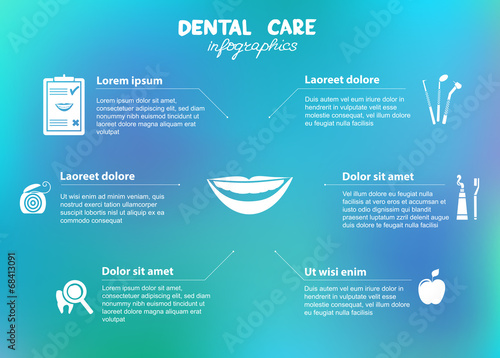The Horizon Of Oral Surgery: Revolutionary Innovations And Enhancements Shaping The Career
The Horizon Of Oral Surgery: Revolutionary Innovations And Enhancements Shaping The Career
Blog Article
Content Develop By-Reeves Browne
Invite to the world of dental surgery, where technologies and developments are forming the future of the area! In this amazing world, you'll witness the transformative power of robotics, the cutting-edge marvel of 3D printing, and the game-changing influence of minimally intrusive techniques.
The future of oral surgery holds an assurance of accuracy, performance, and enhanced patient end results. With the help of innovative robotics, cosmetic surgeons are able to carry out intricate treatments with better precision and control.
3D printing innovation is reinventing the production of oral implants and prosthetics, supplying customized services that fit perfectly into each patient's distinct composition.
In addition, minimally intrusive strategies are lowering post-operative discomfort and recovery time, allowing clients to go back to their daily lives earlier.
Prepare yourself to explore the amazing innovations and advances that are improving the landscape of dental surgery!
Improvements in Robotics
One significant development in oral surgery is the use of robotic modern technology, which permits precise and efficient operations. With the help of robotic systems, oral specialists have the capacity to do complicated surgical procedures with enhanced accuracy, lessening the danger of human error.
These robot systems are equipped with advanced imaging innovation and exact instruments that make it possible for specialists to browse with detailed physiological frameworks with ease. By making use of robot technology, specialists can achieve higher surgical accuracy, resulting in boosted client outcomes and faster recovery times.
On top of that, making use of robotics in oral surgery permits minimally intrusive treatments, reducing the injury to bordering tissues and advertising faster healing.
3D Printing in Dental Surgery
To enhance the field of oral surgery, you can explore the subtopic of 3D printing in oral surgery. This innovative innovation has the potential to change the way oral specialists operate and treat people. Below are 4 vital methods which 3D printing is shaping the field:
- ** Custom-made Surgical Guides **: 3D printing allows for the development of very precise and patient-specific medical overviews, enhancing the precision and performance of treatments.
- ** Implant Prosthetics **: With 3D printing, oral doctors can produce customized implant prosthetics that completely fit a person's distinct makeup, causing much better end results and person satisfaction.
- ** Bone Grafting **: 3D printing enables the production of patient-specific bone grafts, lowering the requirement for typical grafting methods and enhancing healing and recuperation time.
- ** Education and learning and Educating **: 3D printing can be used to create realistic surgical designs for academic functions, permitting dental doctors to exercise intricate treatments prior to performing them on people.
With its possible to improve accuracy, modification, and training, 3D printing is an amazing growth in the field of oral surgery.
Minimally Invasive Techniques
To better advance the area of dental surgery, accept the potential of minimally invasive strategies that can greatly benefit both specialists and patients alike.
Minimally intrusive techniques are reinventing the area by reducing medical injury, minimizing post-operative pain, and speeding up the healing procedure. These techniques involve utilizing smaller sized cuts and specialized instruments to perform procedures with accuracy and effectiveness.
By using how does a dentist put an implant in , such as cone beam of light calculated tomography (CBCT), doctors can properly plan and implement surgical treatments with marginal invasiveness.
In relevant webpage , using lasers in oral surgery enables specific cells cutting and coagulation, causing decreased blood loss and decreased healing time.
With minimally invasive techniques, individuals can experience quicker recuperation, minimized scarring, and improved results, making it an essential aspect of the future of oral surgery.
Conclusion
So, as you can see, the future of oral surgery is unbelievably promising, with amazing technologies and advancements forming the field.
From the developments in robotics to the use of 3D printing and minimally intrusive methods, dental doctors are reinventing the means they offer care.
While some may fret about the prospective expense related to these improvements, it is necessary to remember that these innovations ultimately boost person results and minimize healing time, making them well worth the financial investment in the future.
